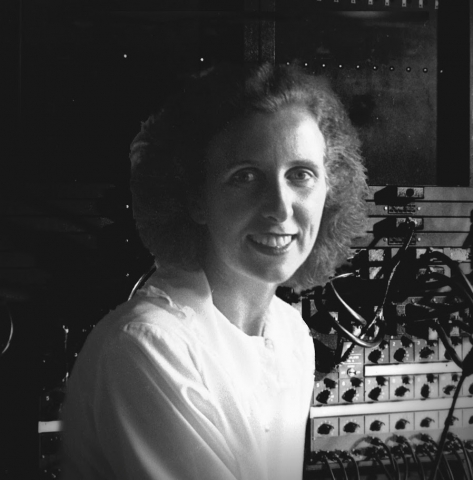Nearly 80 years ago, Kathleen “Kay” McNulty ’42, a recent emigrant from Ireland, graduated from Chestnut Hill College as one of only three women to graduate with a bachelor’s degree in mathematics.
Today, her legacy continues in a new form at the U.S. Army Combat Capabilities Development Command, now known as DEVCOM, Army Research Laboratory in Maryland, where a new supercomputer has been named in her honor.
 The addition of the namesake supercomputer, Kay, is part of a bi-annual upgrade by the Department of Defense (DOD) High Performance Computing Modernization Program. The new Liquid Computing system will contain 48 core Intel XEON (Cascade Lake Advanced Performance) processors combined with the largest solid state file systems the DOD has implemented to date. With the addition of Kay, Army researchers will gain support for data-intensive project calculations, including work with artificial intelligence, data analytics, machine learning, and emerging technologies.
The addition of the namesake supercomputer, Kay, is part of a bi-annual upgrade by the Department of Defense (DOD) High Performance Computing Modernization Program. The new Liquid Computing system will contain 48 core Intel XEON (Cascade Lake Advanced Performance) processors combined with the largest solid state file systems the DOD has implemented to date. With the addition of Kay, Army researchers will gain support for data-intensive project calculations, including work with artificial intelligence, data analytics, machine learning, and emerging technologies.
Right after graduation, McNulty was hired by the U.S. Army to work as a human computer, calculating trajectories for missiles, bullets, and shells to create ballistic tables for soldiers to reference during World War II. Excelling at the work, McNulty was one of six women selected to work on a top-secret project intended to do her own work but faster.
The ENIAC, formally known as the Electronic Numerical Integrator and Computer, would calculate ballistic reports in seconds instead of hours. Yet, McNulty and the team of human computers were needed to program the computers to compute the data correctly, embarking on a task which had never been done before.
At 27-tons and filling 680-square-feet, the ENIAC debuted in 1946 as the design of two young engineers at the University of Pennsylvania’s Moore School of Engineering. The work of McNulty and the other women went unrecognized for decades. McNulty however was forever connected to the project as she married one of the two inventors of the ENIAC - John W. Mauchly.
After her husband’s death, McNulty became the public expert on ENIAC, with intimate knowledge and details of the project and how the system worked. For many years, she spoke of ENIAC without sharing her role and work, although it was clear that her knowledge of the project was exceptional. It was not until 1992 that the true role of the ENIAC programmers was discovered, by an enterprising computer science student looking for female role models.
The recent recognition by the DEVCOM Army Research Laboratory follows countless articles, films, and a handful of international honors and awards honoring McNulty’s work including the 2020 documentary produced by Irish Television and a 2019 induction to the Irish American Heritage Foundation’s Hall of Fame.
Although McNulty often glossed over the impact of her work when discussing ENIAC, her story and image cannot be ignored and continues to earn her recognition as one of the mothers of computer programming.





